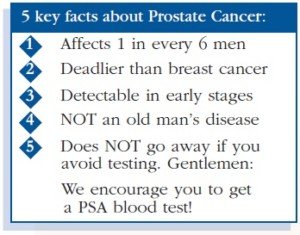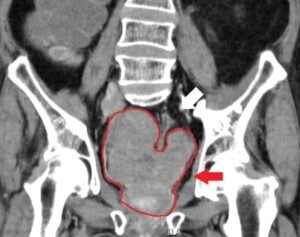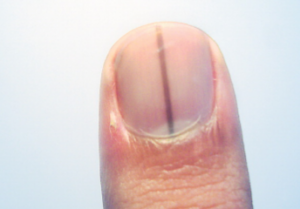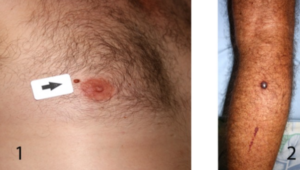Why are some men’s prostate cancer diagnosed at an advanced stage?
Did they ignore symptoms? Did a core biopsy miss it?
What’s really going on as to why this disease often gets diagnosed only when it becomes advanced?
The survival rate for late-stage prostate cancer is grim, especially for elderly age men.
“When prostate cancer is diagnosed at stage IV, it can occur due to several reasons,” begins Jonathan Stegall, MD, an integrative oncologist and medical director for The Center for Advanced Medicine adult cancer treatment center.
“In some cases, men ignore warning signs such as decreased urinary flow, a feeling of incomplete voiding, erectile dysfunction, and aches and pains as part of getting older — when in reality these were signs that prostate cancer was present.
“In other cases, patients will present with stage IV disease without having chronic symptoms.
“Sometimes, prostate cancer does not cause the typical symptoms, and the first sign is bone pain as a result of cancer metastasis to the bone.”
This is really unfortunate, because by this time, the disease is considered advanced, and this late stage is predictive of poor survival rates.
The fact that sometimes a more curable stage of prostate cancer doesn’t cause symptoms is precisely why all men should undergo yearly screening including the PSA blood test.
A biopsy gone wrong?
“A biopsy of the prostate is typically thorough, but certainly not perfect,” says Dr. Stegall.
“In some cases, 12-core biopsies of the prostate are taken.
“Research has shown that false negatives (the results show no cancer when cancer is actually present) occur at a rate exceeding 30%.
However, when 20-core biopsies of the prostate are taken, the false-negative rate decreased to approximately 10%.”
This is something men should bring up to their physician when the recommendation is a core biopsy.
How to Bring This up to Your Doctor
You might say, “Given my concerns and risk factors, I’d like to ensure we minimize the chance of missing a tumor.
“Would a 20-core biopsy be appropriate?”
Citing research can support your request; studies show extended core biopsies (18-20 cores) can improve cancer detection rates compared to the standard 12-core method (Guichard et al., 2007).
Emphasize your willingness to follow medical guidance but express that you prefer a more thorough approach to reduce false negatives and ensure peace of mind.
Prevent a Late Diagnosis of Prostate Cancer: When to See a Urologist
Ideally, consultation should occur within a few weeks of symptom onset, especially if symptoms persist or worsen.
Additional symptoms include difficulty starting a urine stream, burning with urination, blood in the urine or semen, and painful ejaculation.
According to the American Urological Association, prompt assessment improves the chances of detecting cancer at an early, more treatable stage.
Delays may lead to a more advanced diagnosis, reducing treatment options and survival rates.
Truth can be frightening — but not getting things checked out can ultimately prove deadly.



 Jonathan Stegall, MD,
Jonathan Stegall, MD,























